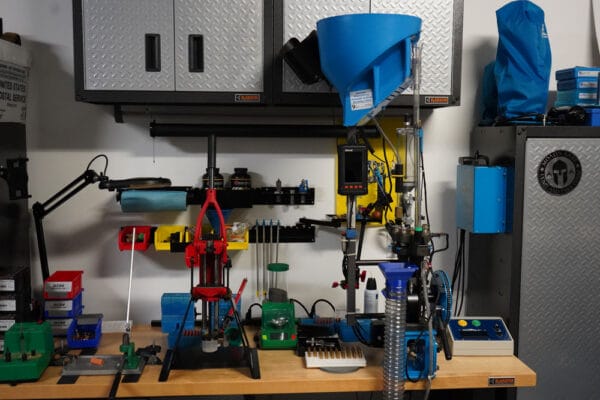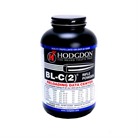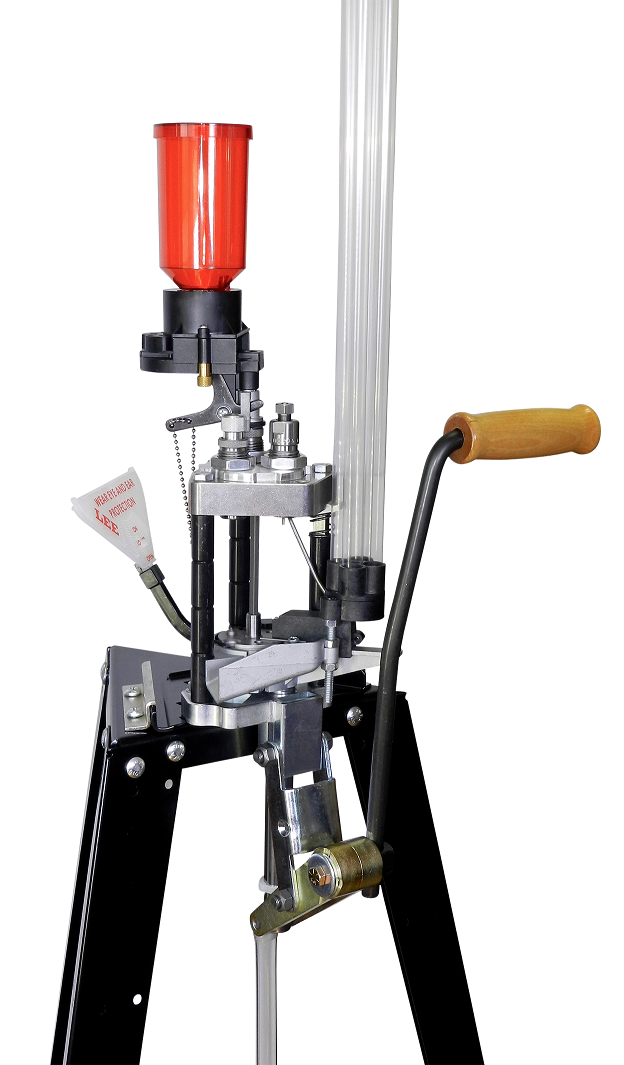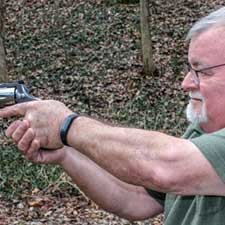
In Reloading 101, we have covered a number of topics to help new reloaders get the gear they need to get started, whether a progressive press is the right choice, and how to load popular calibers like .223 and handgun ammo. Now, for the last article, we will discuss leveling up as a reloader and getting to that next level in reloading skill.
What does that mean? What happens once you progress past the beginner and intermediate stages? Does your equipment list change? Do you need to re-think your procedures? Different questions and scenarios can pop up… we’ll look at a few of them.
Next Level?
What do I mean by next level? What levels are there in reloading? Let’s take a quick look at what I’ve observed over the years.
The rookie reloader may own a press, typically a single-stage or maybe a turret. They will load for one or two calibers. A low number of calibers reloaded alone does not automatically define the reloader as a rookie. Some competitive shooters load only two or three calibers, but they’ve done that for years and have loaded thousands of rounds a year in each caliber.
Our newbie may own one piece of equipment with which to perform one reloading function, one press, one powder measure, and one scale. They are learning and are hesitant to experiment, to vary from the “recipes” they are familiar with. He may have one can/type of powder on their bench and one box of bullets. Usually, he will produce a hundred loads or so in a week. He has not yet progressed into “production mode.” He loads enough to shoot, to have some fun, to hunt with. As I said, he’s learning.
The next rung on the ladder finds our newbie progressing to the next level. An intermediate reloader may have progressed from only loading two or so calibers to more. They have added equipment that allows functions to be accomplished in different ways, such as another press or a better powder scale. Other items that may have been purchased might include a case trimmer, calipers, powder trickler, and chronograph. These are items that may have been deemed not essential when starting but now seem too important not to buy. More than one reloading manual now graces the reloading room shelf, as do multiple brands/weights/types of bullets. Several cans of powder sit at the ready. Our rookie is no more… now he or she is a veteran. So… where do they go from here?
If they continue to climb the rungs of the reloading ladder, they will become what I’ll term an advanced reloader, for lack of a better word. Notice I didn’t call them a “serious” reloader because seriousness is prevalent at all levels. The advanced reloader may have added to the gun safe and needs to expand the caliber selection he reloads for. Or, he may have taken up long-range shooting and needs gilt-edged accuracy. Another scenario is the competitive shooter, someone who practices a lot and goes through thousands of rounds. Any of these conditions (and many others, of course) would require the reloader to “move on up.”
Live Inventory Price Checker

|
Hodgdon Powder Co., Inc. Hodgdon Powder H4831 Sc | Brownells.com | $ 59.99 |
|

|
Hodgdon Powder Hodgdon Annual Powder Manual 2022 Handgun/Rifle 19th Edition | Optics Planet | $ 19.49 $ 14.95 |
|

|
Hodgdon Powder Co., Inc. Hodgdon Powder Bl-C(2) | Brownells.com | $ 46.99 |
|

|
Hodgdon Powder Funnel/Pouring Cap | Optics Planet | $ 5.99 $ 4.19 |
|
The Next Level
I am most familiar with my own reloading experience, of course, so I’ll use it to illustrate. I started reloading in 1978 with the long-gone Lee kit that you could use at the range — no press needed. You pounded (after lubing, of course) the case into the hand-held die with a 16-ounce claw hammer (that’s what I used, anyway) and then pounded a rod to knock it out. It went downhill from there. I stepped up just one rung on the reloading ladder by buying an RCBS press, the Jr. It is only a single-stage press, but it sure beat the “whack-a-mole” method. I bought the press, a powder scale (balance beam), and a powder measure. I was set!
Progressing to the mid-level reloading rung, I purchased a Lee turret press, a case trimmer, a couple of calipers, a chronograph, and other assorted accessories. I was now able to produce one loaded cartridge without having to take the case out of the shell holder. I also bought a Hornady digital scale, the small portable one that doesn’t take up room on your bench. I was quite happy with this setup, but I kept adding to my gun inventory, and pretty soon, I was loading for more calibers than you could shake a stick at. Then it happened…
Live Inventory Price Checker

|
Lee Pro 1000 Progressive Reloading Kit For 9MM Luger | Optics Planet | $ 300.00 $ 255.49 |
|

|
Lee Precision Pro 1000 Auto Reloading Kit .38 SPL Progressive Reloading Kit | GrabAGun | $ 200.99 |
|

|
Lee Precision Pro 1000 Progressive Auto Reloading Kit .45 ACP | GrabAGun | $ 196.99 |
|
|
|
Lee Precision Pro 1000 .44 Spl/.44 Mag 3-Hole Progressive Reloading Kit - 90634 | Palmetto State Armory | $ 253.49 |
|
The Move On Up
I was content to “roll my own” on the Lee turret and RCBS Jr. until Dillon asked me to write a review for their Blue Press catalog/magazine on the XL750 progressive press. They sent me one, along with the electric case feeder and assorted do-dads. I was ecstatic. Typically, the shift to a progressive press is one of the delineators between the mid-level and the advanced reloader… I had taken it to the next level. You talk about piles of loaded ammo! You talk about speed! You talk about automation! As I said, I was ecstatic (as was my shooter/engineer/reloader son, who got to examine the press up close and was truly impressed). Since the original request for an article about loading 9mm, I was asked to write a piece on loading 223. So, those are two calibers I can crank out in quantity.
But… does quantity equal quality? In this case, yes. I am loading ammo that two of my sons and I will shoot at my backyard range. What if I were shooting a 1000-yard competition? Here’s where the “advanced” part comes in. My definition of an advanced reloader is: a reloader who has the correct tool for the job, whatever that is. If the job is loading practice ammo, the progressive press shines. But, what about that 1000-yard competition? I would then break out my RCBS MatchMaster precision powder measure and the old RCBS Jr. single-stage press.
Moving on doesn’t mean just acquiring equipment and having a reloading room that looks like a reloading store. As stated above, to my mind, it means just having the right tool for the job.
My almost 50-year-old press still does the job. If I needed a more accurate way of measuring and dispensing powder, I would break out my RCBS MatchMaster. I named that precision scale the overall best scale in a reloading scale article I did a while back, and I liked it so much that I kept it. It uses two powder tubes… one for everyday loads and the other, smaller one, for match loads. That’s what I mean by moving on up in reloading… having the right tool for the job. There are what newer reloaders might consider to be esoteric pieces of equipment at their early stage of the game — I’m talking things like a neck concentricity tool, Wilson micrometer-equipped bullet seater die, and similar high-end items. But, if that’s the tool you need at the time, you get one and you use it. Heck, even something as simple as a powder trickler might be ignored by the newbie who may not need it. But, its importance may well become obvious to that same newbie a couple of years down that yellow brick road I mentioned above when he gets to that stage ofhis reloading development.
Adding It All Up
As we close our five-part series on reloading, let’s make sure we understand the journey from “How do I read this powder scale?” to “My handloads shot into 5/8″ at 200 yards”. The new, freshly minted reloader decides to order a reloading press kit. He watches a video on how to set it up and installs his 9mm dies. After buying a few hundred primers (not knowing they sell them by the thousand) and 100 bullets, he sets to his task. Exactly 99 loaded cartridges later (one got buggered up seating the bullet), he is ready to go shoot, which he does. Good for him! He has successfully become a new reloader.
We follow him down the path as he expands his reloadable caliber selection, adds maybe another press or two, and just generally runs with the ball. His “middling” reloader season is upon him. He surmises, however, that he is about to pass the middle ground and move into advanced reloading. His purchase of a progressive press is one hint that the transformation is beginning. Adding a very expensive powder scale/measure or other similar upper-end accessory means our reloader is hooked and has turned into an advanced reloader. His reloads are now demanding upgraded tools, so he buys them… he buys what he needs to get the job done. It’s a state of mind, being an advanced reloader. Most of my friends who reload and who could be considered “advanced” reloaders aren’t cranking out hundreds of rounds per hour, but instead are producing very few cartridges to ring a gong at 1200 yards with. The time they spend is as much as or more than the time lesser-experienced loaders may spend cranking out ammo for Saturday afternoon’s plinking session. Every scenario is different, but we’re all after the same result: ammo that produces one-hole accuracy or rings the steel with every shot.
Where do you fall on the reloading continuum? Let’s hear from you below!
About Mike Hardesty
With experience spanning over 45 years, Mike Hardesty has long enjoyed shooting and reloading. An inveterate reloader, he casts bullets and reloads for a diverse array of firearms, each handled with long-practiced precision. Living in rural Indiana, his homestead boasts a personal 100-yard range where he shares his love for guns to his four sons, their wives, and eleven grandchildren. As a recognized author, his writings have been featured in notable platforms like Sniper Country, Bear Creek Arsenal Blog, Pew Pew Tactical, TTAG, Dillon Precision’s Blue Press, and Gun Made, revealing his ongoing passion for firearms at the age of 72.


No matter when you start reloading or how long you’ve been reloading, read the reloading books and then re-read them again. It doesn’t take much powder to blow up your weapon along with you or bystanders. The most important piece of advice is having fun reloading but be safe doing it.
The one thing I noticed is that the RCBS electric case trimmer was expensive about 14 years ago so I ordered the hand crank, got a 1/4 inch thick steel plate, two drawer slides and welded them to the plate and then welded a plate to the slides, put a handle on it with a return spring and added an electric drill where the hand crank was, a rheostat light switch to control the speed and a foot pedal to turn it on and off and Wala. No more tired hand from cranking. Now instead of 100 in an hour… Read more »
Very clever! Sounds like you have it figured out. I appreciate your comments. It’s interesting that you are a drummer – I’m a retired band director and appreciate musicians! Thanks for writing.
Oh, you’re a drummer. I’m a guitar man. Blues and Southern Rock mostly.
I had a studio and play 5 different instruments, sing write the whole production. Love Southern Rock and though I say I don’t care for blues, I like Pink Floyd, Robin Trower, Hendrix, Tull and a few others and I am told that is blues by my friends and that I am wrong. I am totally into Blue Grass now and wished I would have been introduced to the banjo and blue grass music at a young age but my house was Elvis, ricky nelson, glen miller, Mario Lanza and Hank Williams Sr when I was growing up. So are… Read more »
Only guitar for me. I tried the banjo put couldn’t “get it” so I gave it to my youngest son years ago. He can play it now. I tried keyboard too and gave up. But, I kept the electric piano cuz it can do background fill.
I’m a Fender man. I like Strats, but I have a Tele and a1975 aluminum neck Kramer.
I love Telecasters for that pure country sound.
With apologies to “Yellow Hat” (“Treasure of the Sierra Madre”) https://www.youtube.com/watch?v=5hTtXfThAss “Case trimmer? I don’t got no case trimmer. I don’t need no case trimmer! “I DON’T GOT TO CHO YOU NO STEENKIN’ CASE TRIMMER!” (sounds of repeated gun fire) Method #1 Assemble and set up case trimmer Put correct pilot in case trimmer Measure case As required, trim, measure, fiddle, trim, measure, fiddle…… Method #2: (better) Put case trimmer in box of stuff to donate to charity or sell on eBay Put RCBS Trim Die in press Run case up into trim die Trim off any exposed brass with… Read more »
I also started reloading with the Lee loading kit, but in 1976, instead of 1978. And I used a wooden maul I’d made on a previous camping journey instead of the claw hammer. Pretty similar otherwise.
My favorite of what I’d call the ‘advanced techniques’ is the annealing, trimming, and reforming to make new brass for long-obsolete cases that are no longer available.